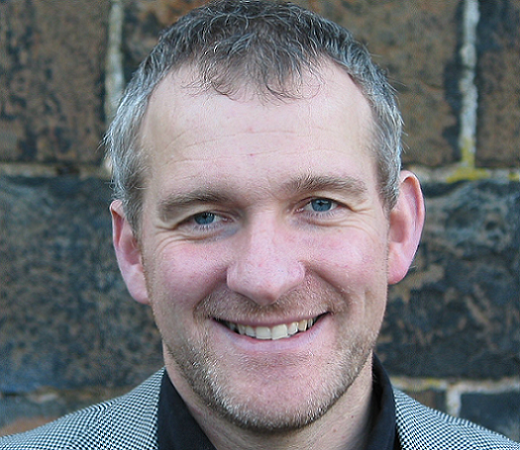In November 2020 Glasgow will host what promises to be an influential UN Climate Change Summit, the 26th session of the Conference of the Parties (COP 26). With a year to prepare for COP26 Glasgow City Council leader Councillor Susan Aitken has already set out her ambition for Glasgow to become the UK's first 'zero carbon city'. Net zero is an increasingly common policy aim but the devil is in the detail.
Transport has little prospect of achieving net-zero within the sector itself. Substantial emissions are associated with the manufacture of electric cars and buses even if tailpipe emissions are removed and operations rely on renewable energy. Transport can still become net zero by investing in emissions reduction activity like planting trees. However, transport is a derived demand, so perhaps the starting point for net-zero transport design should be to seek emissions reduction within the activity that drives the demand. Once the needs of people and places are clear, low carbon transport supporting net-zero activities becomes more practical.
Planning transport in conjunction with the activities that derive the transport demand remains a weak area of transport delivery. The draft Scottish national transport strategy rightly puts climate change issues at the top of the policy priorities and the needs of people and places as central policy goals. However, when it comes to action on sustainability, a hierarchy of transport modes ranked in order of perceived sustainability is suggested as a possible way to frame delivery. The draft strategy does not describe how a mode choice hierarchy can be reconciled with the needs of people and places. Flying is the lowest carbon approach for many residents of Scottish islands when travelling to hospital but is at the bottom of the hierarchy proposed. Private car can often be the lowest emission transport supply for commuting by shift workers so there is a risk that nurses might feel under-valued by the modal hierarchy approach to emissions reduction. Pressure on travellers to shift to bus or train that is not planned in context will be at best ineffective, and could increase emissions, if inefficient transport supply changes are made consistent with the modal hierarchy. All modes have a key role to play in sustainable transport, so the main effect of designating some modes as more sustainable than others is to render the transport strategy as socially unsustainable.
A decade ago, brave claims were made by many organisations about net-zero, but many were simply purchasing cheap offsets, without significant steps to reduce their own emissions. The May 2019 UK action plan published by the committee on climate change is clear that the UK should aim to meet the net-zero targets largely through domestic action. Effective global management of emissions reduction is immensely complex depending on international deal making, but it is focused local action that that delivers change.
Good strategy builds the bridge between complex strategic goals and delivery programmes in ways that can command support. One example of this over the last 20 years might be the national accessibility planning agenda which national non-transport government departments got behind to help people reach health, employment and other public services, and which resulted in thousands more public service delivery locations within walking distance of people's homes than there would otherwise have been. A focused agenda presented as being predominantly about equity, has probably delivered more for transport emissions reduction than many of the emissions reduction programmes.
In many ways the draft Scottish transport strategy is an impressive vision, and the delivery plan has yet to be prepared, so the devil may yet be tackled in the detail. However, it is not easy to see how the proposed approach to manage travel demand using a sustainable transport hierarchy can be connected to the overall strategy aims. This leaves open the prospect of 'unintended consequences' that drive up transport emissions. There are plenty of examples of mode shift policies failing in these ways, such as attempts by major trip attractors to reduce the use of cars, changing the competitiveness of locations, leading to higher emission travel choices, and favouring wealthier groups in society. Rapid and deliverable action must start with people, understanding and respecting their needs and planning practical net-zero door to door journeys consistent with effective placemaking. Glasgow City Council making a commitment to achieve net-zero is a great start. Delivery depends on others being able to deliver practical action towards the commitment.
There will be a rush to publish ambitious plans for COP26. Ensuring these plans leave a positive legacy is much harder. For strategies to be effective they need to view transport the way that citizens view transport, and that means starting with jobs, education, lifestyles and experiences, rather than transport. Destination choice change is the fastest and easiest way to make a big difference, perhaps replacing a drive in the country with a walk in the local park. Perhaps sustainable transport strategy should be more about organising weekend entertainment in local parks than investing in transport, a point made in research findings about the effectiveness of interventions in smarter choices programmes.
For the decade ahead, net zero transport strategies will be core business. The ultimate transport changes might be faster and cheaper bus travel, or better walking routes, but the journey to net-zero does not start at the end point. Starting by planning around the lifestyles of people and delivering better local access to opportunities could lead to faster delivery of net-zero than is currently expected.

Derek Halden is Director of DHC Loop Connections and Secretary of Scotland's transport think tank STSG


